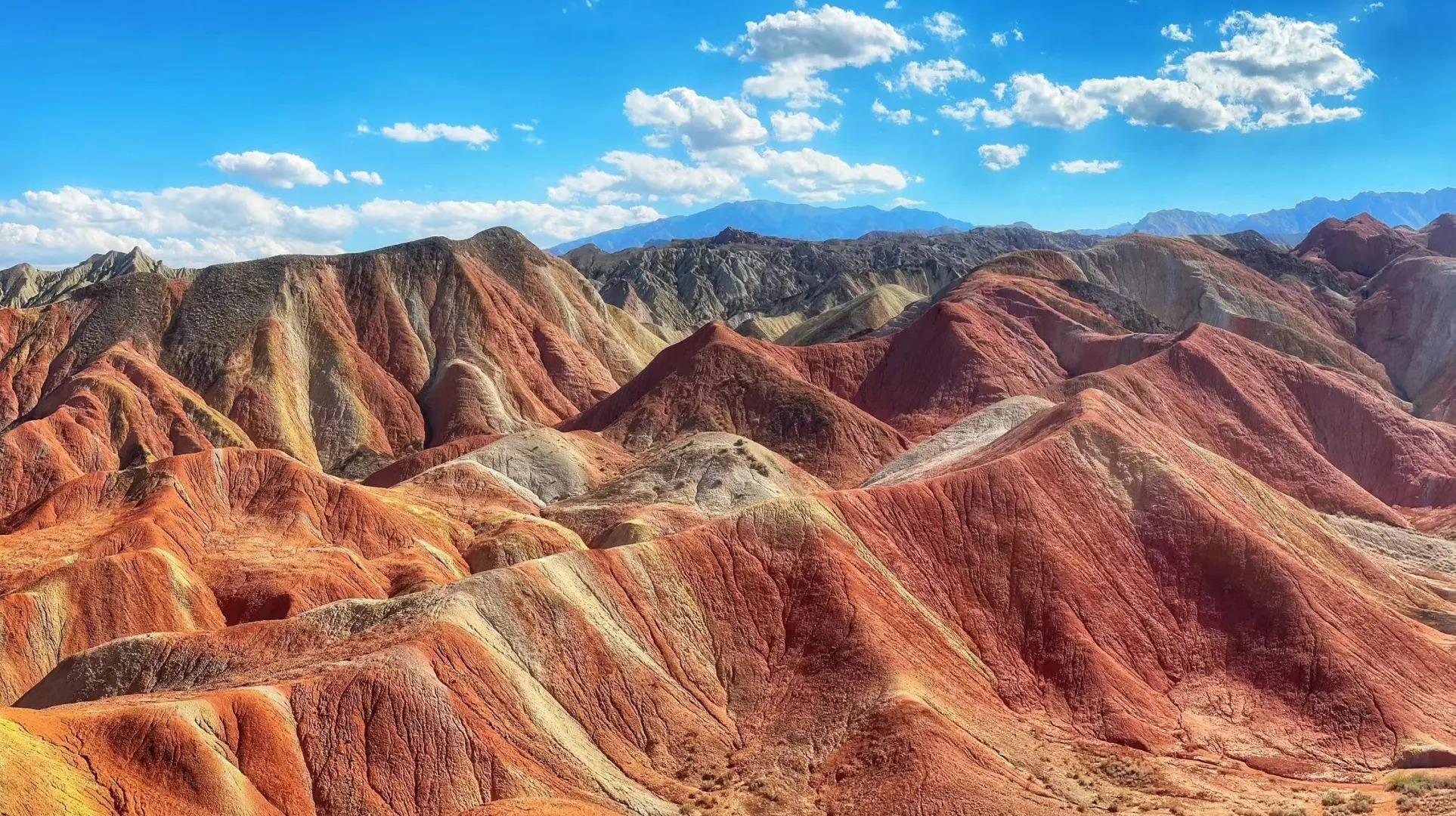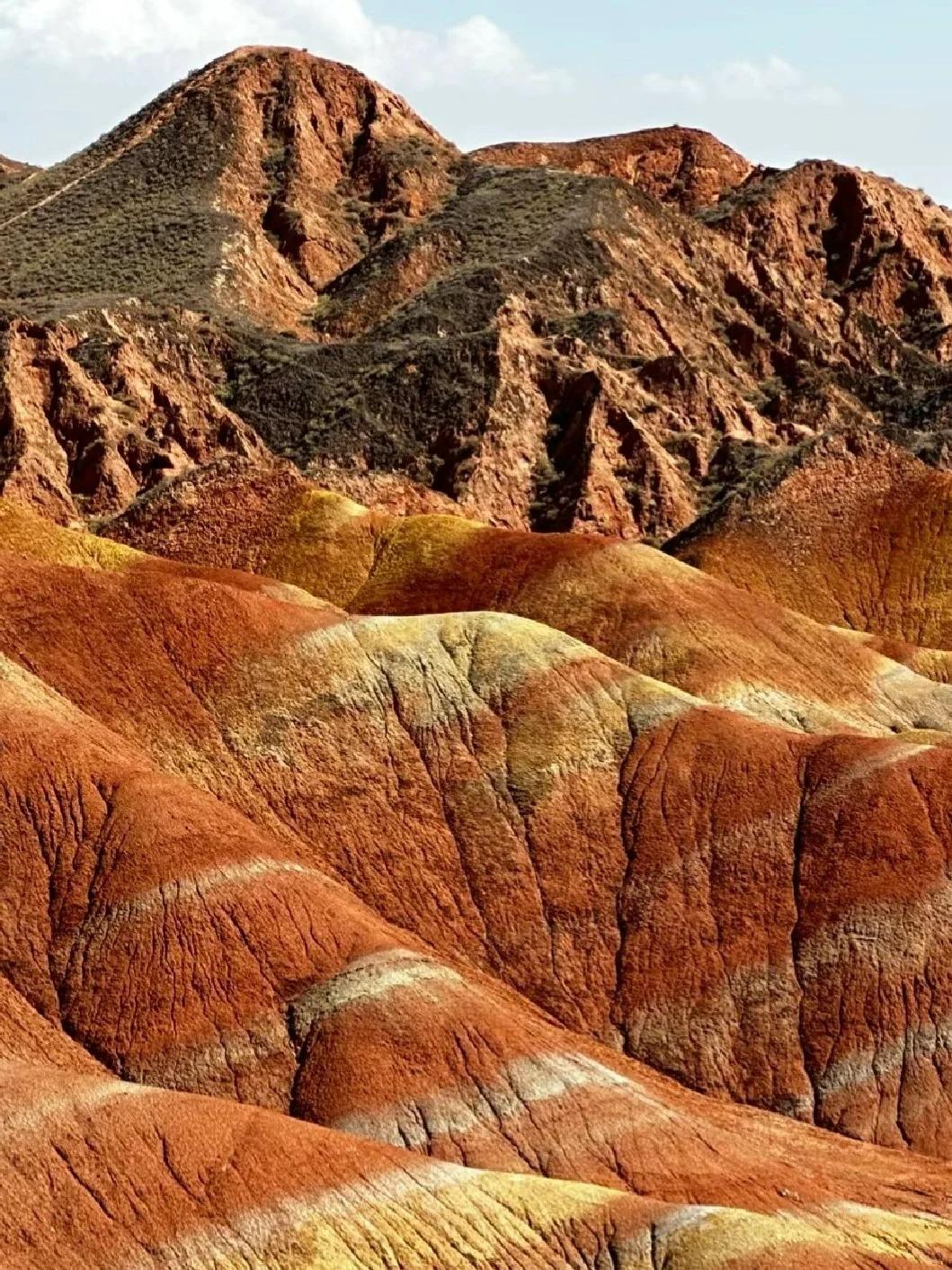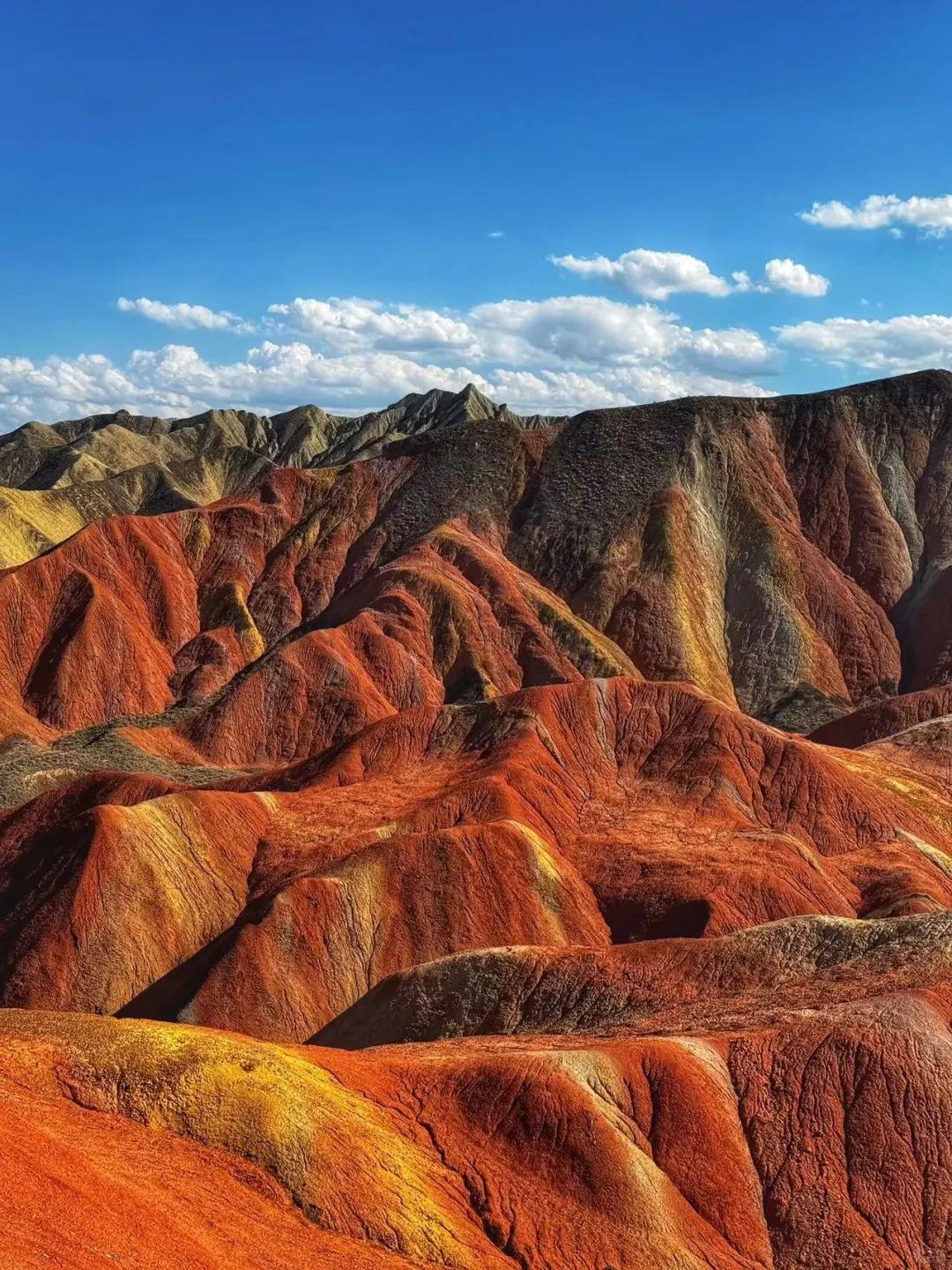Introduction to China’s Rainbow Mountains
Nestled in the heart of Gansu Province, the Rainbow Mountains of China stand as a testament to nature’s artistic prowess. Located within the Zhangye Danxia National Geological Park, these colorful rock formations have captivated visitors from around the globe with their surreal, striped appearance.
This geological wonder is the result of millions of years of mineral deposits and tectonic activity, creating a landscape that seems almost too vibrant to be real. The Rainbow Mountains have gained international recognition, not only for their striking beauty but also for their scientific significance in understanding Earth’s geological processes.
As one of the most photographed natural wonders in China, the Rainbow Mountains have become a symbol of the country’s diverse and spectacular landscapes, drawing tourists and geologists alike to marvel at their unique beauty.

Geological Formation and Characteristics
The Rainbow Mountains are a prime example of the Danxia landform, a type of geomorphology unique to China. This landform is characterized by red-colored sandstones and conglomerates of largely Cretaceous age.
The formation process began over 24 million years ago, as layers of different colored sandstone and minerals were deposited in the area. Subsequent tectonic activity lifted these layers, while wind and rain erosion sculpted the rocks into the colorful ridges and valleys we see today.
The vibrant hues – ranging from deep reds and burnt oranges to cool greens and blues – are the result of trace minerals within the rock layers:
- Red layers: Iron oxide
- Yellow: Sulfur
- Green: Chlorite
- Blue: Manganese and copper oxides
While the Zhangye Danxia landform is the most famous, other notable examples in China include the Danxia Mountain in Guangdong and the Longhu Mountain in Jiangxi.

Visual Spectacle and Best Viewing Experiences
The Rainbow Mountains present a mesmerizing tableau of colors that seem to shift and change with the light. Bands of vivid reds, yellows, greens, and blues streak across the mountainsides, creating patterns that resemble an abstract painting on a grand scale.
For the most breathtaking views:
- Visit during sunrise or sunset when the low angle of the sun enhances the colors
- Try different seasons: summer for lush greenery, autumn for golden hues
- Explore various viewpoints, especially Platform 4 for panoramic vistas
| Time of Day | Viewing Experience |
|---|---|
| Sunrise | Soft light, intensified colors |
| Midday | Clearest visibility, stark contrasts |
| Sunset | Warm glow, dramatic shadows |
Exploring Zhangye Danxia National Geological Park
The park is well-organized to accommodate visitors while preserving the natural landscape. It’s divided into several viewing areas, each offering unique perspectives of the colorful mountains.
Visitor facilities include:
- Shuttle buses between viewing platforms
- Walking trails for closer exploration
- Information centers with geological exhibits
Guided tours provide in-depth information about the formation and significance of the landforms. However, self-guided exploration is also possible, allowing for a more personalized experience.
Beyond the Rainbow Mountains, the park offers other attractions such as unique rock formations and desert landscapes, providing a comprehensive view of the region’s geological diversity.

Cultural and Historical Significance
Local folklore attributes the creation of the Rainbow Mountains to various mythical beings, reflecting the awe these formations have inspired for generations. Historically, the area around Zhangye was an important stop on the Silk Road, adding to its cultural significance.
The striking appearance of the mountains has influenced Chinese art and literature, appearing in poetry and paintings that celebrate the natural beauty of the region. In recognition of their geological and aesthetic value, the Zhangye Danxia landform was listed as a UNESCO World Heritage Site in 2009, ensuring its protection for future generations.
Practical Travel Information
To reach the Rainbow Mountains:
- Fly or take a train to Zhangye city
- From Zhangye, take a bus or taxi to the park (about 40km)
Best times to visit:
- June to September for ideal weather conditions
- Avoid national holidays due to crowds
Park details:
- Entrance fee: Approximately 75 RMB
- Opening hours: 8:00 AM to 6:00 PM (May vary seasonally)
Accommodation is primarily available in Zhangye city, ranging from budget hostels to luxury hotels.

Tips for Visitors
For photography:
- Bring a wide-angle lens for sweeping landscapes
- Use a polarizing filter to enhance colors
- Consider a tripod for low-light shots
Prepare for your visit:
- Wear comfortable shoes for walking on viewing platforms
- Bring sun protection and water
- Be prepared for cooler temperatures at higher altitudes
Practice responsible tourism:
- Stay on designated paths to prevent erosion
- Take all trash with you
- Respect local culture and customs
The Rainbow Mountains of China offer a once-in-a-lifetime visual experience, showcasing the incredible diversity and beauty of our planet’s geology. By understanding their formation, significance, and how best to experience them, visitors can fully appreciate this natural wonder while helping to preserve it for future generations.






